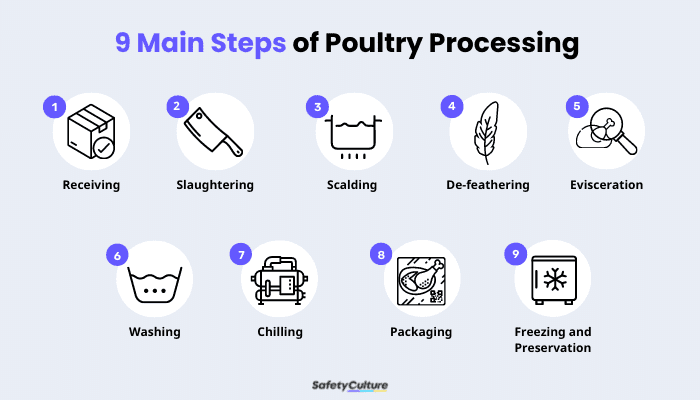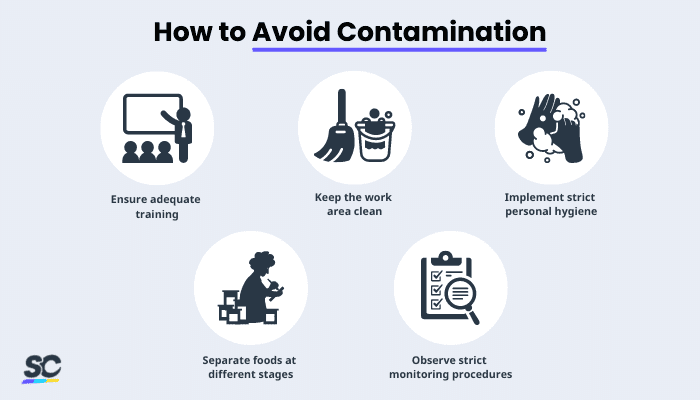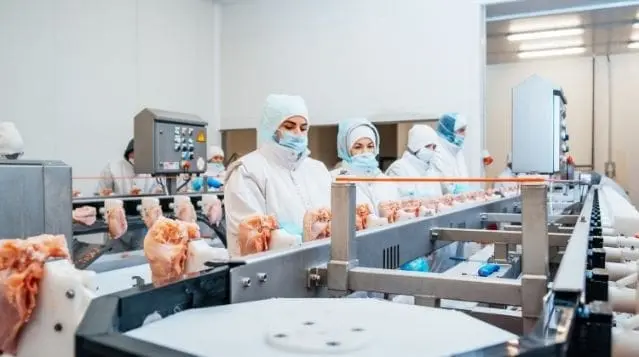What is Poultry Processing?
Poultry processing refers to the method of preparing meat from different types of poultry for human consumption. It often involves using sharp-bladed poultry processing equipment to debone, trim, and cut the birds into various parts.
To improve the poultry meat’s quality for consumers, these parts may be processed with seasonings, spices, marinades, and other ingredients. As needed, secondary processing may also be conducted. This is where parts are converted to ready-to-eat products such as hotdogs, sausages, or nuggets.
The Occupational Safety and Health Administration (OSHA) recognizes that the poultry processing industry is exposed to many serious safety and health hazards. This is why industry standards and regulations are set out to guide the employers, workers, and managers of processing plants in observing safe and quality operations.
How It Works
According to Hygienic Processing of Poultry for Human Use (Ayele and Pal, 2021), these are the main poultry processing steps:

9 Main Steps of Poultry Processing
- Receiving: Once the crates of poultry arrive at the processing plant, they are transported to the shackling area via conveyors and then placed in holding cages or modular bins to prevent them from injuring other birds and for proper air circulation.
- Slaughtering: In the US, electrical stunning and the use of carbon dioxide are the most common methods to make broilers unconscious or render birds insensible prior to this process. Often, slaughtering is done manually by severing the jugular vein at the ventrolateral base of the bird’s head (sometimes referred to as the modified kosher method).
- Scalding: Using hot water set to 53°C, the birds are scalded for 2 to 3 minutes. It’s important to avoid over and under scalding so that the outer layer of skin and feathers are completely and smoothly removed.
- De-feathering: Poultry pluckers (or pickers) remove the loose feathers from the scalding process. Also, the carcasses are passed by through flame to remove the filoplumes or hairlike feathers.
- Evisceration: Throughout the process, meat inspectors conduct thorough visual inspections to spot bruising, fecal matter, and diseases. While the remaining viscera are discarded, the liver and gizzard are retained; and the latter is also cut, opened, and cleaned. The lungs, kidneys, trachea, esophagus, and crop are all removed manually, while the head is removed using a V-shaped knife or manually as well.
- Washing: Poultry carcasses are spray-washed with cold water to remove blood, loose tissues, and other foreign substances from the surface. If these aren’t removed, contamination may occur.
- Chilling: Rapid cooling, done in less than 40 minutes, prevents microbial growth. Also, this process is key to enabling the maximum shelf life of the final product.
- Packaging: Poultry carcasses are weighed on a pan balance and divided into parts using a knife. The parts are then packed and wrapped, with the legs and giblets in separate trays. After wrapping, inspections are done to verify that the final product is up to par with consumer expectations.
- Freezing and preservation: These steps, along with safe food storage, are done to prevent spoilage and deterioration caused by microbes and fat oxidation.
Improve your GRC management
Simplify risk management and compliance with our centralized platform, designed to integrate and automate processes for optimal governance.
Explore nowImportance of Safe Poultry Processing Systems
As cited by the US National Library of Medicine, the International Labour Organization (ILO) lists the main occupational health hazards that poultry processing workers are exposed to:
- Physical hazards such as noise, exposure to cold, and vibration
- Ergonomic hazards including manual and repetitive work, such as hanging and cutting, forceful exertion, awkward work positions, and fast work pace
- Chemical hazards including dust, chemicals from poultry processing disinfectants, and cleaning agents
- Biological hazards such as bacteria, viruses, and fungi
Further, traumatic injuries and Musculoskeletal Disorders (MSDs) are also the main health effects reported, especially during the processing and packaging steps. These are caused by rapid, repetitive movements by the workers, and the extensive use of knives and other sharp-bladed tools.
On the consumption side, hygienic and safe processing of poultry products is highly crucial in ensuring quality food handling and safety. This is where a Food Safety Management System (FSMS) is useful. An FSMS helps poultry processors and food business operators comply with international standards and regulations, such as ISO 22000 and the Food Safety Act in the UK.
Regulations and Recommendations
The poultry processing sector is regulated by the US Department of Agriculture-Food Safety and Inspection Service (USDA-FSIS) through the following acts:
Create your own Food Safety checklist
Build from scratch or choose from our collection of free, ready-to-download, and customizable templates.
Browse Food Safety checklistsSignificantly, most of the key regulations focus on the cleaning and disinfection of equipment and poultry products. For instance, USDA-FSIS laid down strict guidelines on how carcasses exiting the chiller must be free from traces of fecal contamination and be at a temperature lower than 40°F.
To ensure food safety, the USDA-FSIS requires all poultry processing plants to implement an approved Hazard Analysis Critical Control Point (HACCP) plan that outlines the organization’s sanitation program.
Additionally, OSHA recommends following hazard control measures such as:
- conducting weekly safety training sessions or meetings to give workers a proactive role in monitoring and implementing processes, thus fostering an employee-driven safety culture;
- ensuring employees take proper breaks throughout their shifts to avoid certain injuries that result from fatigue;
- posting safety symbols to communicate safety information more quickly, effectively, and inclusively;
- turning off equipment during maintenance activities;
- wearing Personal Protective Equipment (PPE) as needed;
- rotating employees across different workstations to reduce the wear and tear on bodies caused by doing repetitive tasks; and
- seeking immediate medical attention in events of cuts, scrapes, and bleeding.
Tips to Avoid Contamination
The risk of contamination is present throughout the various stages of poultry processing. To prevent incidents from occurring at any stage, here are some of the steps that you should take in observing extensive measures and facility cleanliness:

How to Avoid Contamination in Poultry Processing
- Ensure adequate training – Team members should be provided with thorough training on all the required sanitation practices.
- Keep the work area clean – Make sure that all employees are either knowledgeable or actively participating in conducting cleaning practices as they work.
- Implement strict personal hygiene – Apart from observing industrial hygiene, it’s also a must to remind your workers to practice good habits (such as proper handwashing) in maintaining personal hygiene.
- Separate foods at different stages – Raw, cooked, and packaged poultry meat must be stored separately at every stage of processing.
- Observe strict monitoring procedures – Make sure that supervisors and team leaders continuously monitor sanitation practices, employee safety protocols, and equipment maintenance.
Ensure Safe Industry Practices with SafetyCulture (formerly iAuditor)
Poultry processing managers must take steps to reduce the risk of accidents through an in-depth understanding of why unsafe activities and incidents occur in their workplace. These steps can then be incorporated into the processing plant’s job hazard analysis.
Additionally, using digital checklists serves as a first-line approach for quality assurance in poultry processing machines. This specifically helps companies ensure that their equipment meet the legislated safety standards. Ultimately, all these improvements and quality processes help reduce worker injuries and fatalities across the industry.
In every poultry processing plant, safety must be a priority. Every frontline worker must be empowered to bring safe work practices to the heart of operations. Luckily, mobile-first solutions like SafetyCulture help in making all of this possible through features such as:
- Build custom checklists for each stage of poultry processing to make sure the entire method complies with industry standards
- Set up wireless monitoring systems to keep track of real-time weather conditions, alerts, and detect unusual changes via sensors and devices
- Conduct equipment maintenance and inspections, automatically generating reports stored in one place for easier access
- Spot or raise facility issues and work process concerns via Heads Up
- Create tasks or assign follow-ups and add reference media such as photos and notes
- Maintain a database of all issues, actions, and inspection results automatically synced in the app’s secure cloud




